What is Dental Disease?
Most rabbit owners would admit to giving little thought to their pet’s teeth unless they receive a nip or when a treasured possession has been chewed. It can, therefore, come as a bit of a surprise to discover that their seemingly healthy pet has issues with their teeth. Before we look at what can be done to prevent or treat dental disease in rabbits, let’s have a quick reminder of what dental disease is all about.
Dental disease in rabbits, also known as malocclusion and molar elongation, affects many pet rabbits, and some breeds are more prone to this condition than others. Rabbit’s teeth grow continuously throughout their lives, so the teeth must wear down at the same rate as they grow. For this to happen, the upper teeth must meet the lower teeth correctly to prevent overgrowth. A rabbit with normal, healthy teeth will have them constantly worn down naturally when chewing on grass and other plants, as these are very abrasive, which is why a good diet with high fibre is essential for good dental health.
Since rabbits’ incisor (front) teeth grow phenomenally – 1cm a month and sometimes up to 1mm daily- one can quickly see how a problem can develop if normal wear does not control this growth.
There are three main types of dental disease:
- Trauma, such as injury from a fall, predominantly affecting the incisors.
- Congenital (genetic/inherited) misalignment can only be prevented by breeding from dental disease-free stock. This version of dental disease often begins to show early in life, as young as four weeks old and is life-long, often requiring long-term treatment or, in severe cases, euthanasia. It affects the incisor and/or cheek teeth.
- Cheek teeth elongation, usually occurring in middle-aged or older rabbits, can be a normal part of ageing for pet rabbits, who generally live significantly longer than their wild relatives. However, a lack of abrasive fibrous food such as hay can increase the chances of a rabbit developing this condition.
Rabbits have 28 teeth, divided into the incisors and the cheek teeth. The cheek teeth (the premolars and molars) grind down the food. The incisors (the chisel-like front teeth) are used for cutting through vegetation and for gnawing, biting and grooming and consist of two lower teeth and four top teeth – with the two tiny tube-shaped secondary or “peg” teeth positioned directly behind the two top incisors.
These teeth have evolved to cope with a rabbit’s high-fibre and abrasive diet, so any misalignment means they do not wear down as required and lose their shape and functionality. Rabbits do not need canine teeth, so they have none, and there is a gap between the incisors and the premolars. This is shown in the x-ray photo below of a rabbit with early dental disease – the “roots” of the teeth can be seen too. Rabbits have what is referred to as open roots, where the roots are not “proper” but just extensions of the tooth that is embedded in the gum. This is necessary to allow for the growth of the teeth throughout the rabbit’s life, which is essential to cope with their abrasive diet in the wild.

Let’s look more closely at how dental disease affects a rabbit.
Incisor malocclusion
In a rabbit with normal teeth, the lower incisors slot between the upper and peg teeth when the mouth is closed, resting just on the peg teeth in perfect alignment. This is shown in the photo below.

The two photos below show a rabbit with early signs of incisor malocclusion, which predictably progressed to severe disease within months.


Misalignment results in the teeth not meeting when the rabbit eats; thus, the teeth do not wear, resulting in overgrowth. When this occurs with the incisors, it causes the front teeth to protrude out of the mouth, grow at an angle to each other, or curl back into the mouth or out sideways. This makes it impossible to eat or drink normally, as shown in the photos below.


Cheek teeth (molar) elongation
Misalignment of the teeth not only affects the incisors. It can result in the molars developing spikes or spurs on the outer or inner edges that dig into the tongue or cheek, causing ulceration, pain and sometimes excessive salivation (drooling). Infection in the jawbone can also occur in severe cases, with large abscesses forming along the jawline or cheek. Such abscesses are filled with solid white pus, causing severe pain and discomfort and inability to eat or drink normally.
The photo below shows two molar spurs after their removal – the cotton bud is there to compare the size. It is easy to see how such spurs can cause damage when sticking into the tongue or cheek.

In the photos below, you can just see the dental spurs before they were removed, as indicated by the arrow in the first photo. The red colour in the second photo is shadow, not blood!
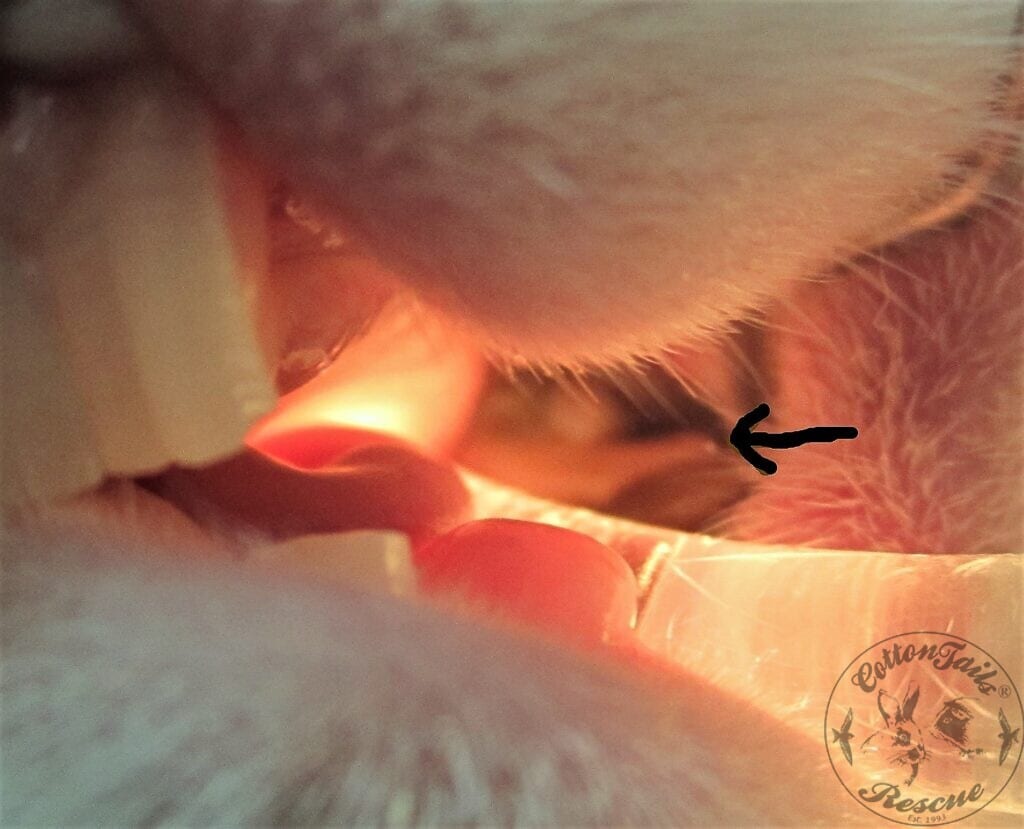

In addition, the upper molar and top incisor “roots” can become elongated, push upwards towards the tear ducts, and squash them flat. Tear ducts are tubes (one in each eye) that allow tears from each eye to drain away via the nasal passageway. Flattening the tear ducts means that the tears overflow from the eye onto the surrounding fur (known as Dacryocystitis). This often results in infections and abscesses, as shown in the photo below. Sometimes, only one eye is affected due to the root issue being on only one side.

How to manage a rabbit with runny eyes due to dental disease
There are ways to manage a rabbit with this side effect of dental disease. Once a veterinary opinion has been sought regarding the dental issues (which may involve having the tear ducts flushed out or dental spurs removed), various things can be done to keep the effects of overflowing tears to a minimum. Antibiotic eye drops can be helpful if the eye is inflamed or infected, with redness and discharge being the main symptoms. To manage the condition daily, the matted fur around the eye has to be trimmed back to allow air to circulate. This decreases the chances of fungal and bacterial infection developing on the skin around the eye due to the damp conditions.
The rabbit needs to be held gently but firmly and wrapped in a towel if necessary. Taking a wet cloth, wipe gently around the area to soak the fur (making sure water does not go into the eye), as this will make it far easier to remove the sticky mats that have formed. Letting the water soak into the mats for a few minutes can make removing them easier. A pair of short-bladed scissors is needed to gently trim away the fur, gently combing out some of the mats beforehand if this can be done without causing the rabbit distress. Don’t worry too much if you snip off a whisker or two – they will grow back again. Make sure the whole area around the eye is trimmed short, and once you have finished, you can gently wipe the eye with a damp tissue to remove any stickiness still lurking.
If you are unsure you can do this safely, please do not try it and ask your vet to do it. Depending on how quickly the fur grows, you will likely need to trim around the eye every two weeks or so. Daily, you will need to gently wipe the eye area with a damp tissue to keep the discharge under control. You may find that if your rabbit has a bonded bunny friend, the eyes will be kept clean once you have removed the bulk of the matting, as many rabbits seem to find licking the discharge quite inviting!
Symptoms
Not all rabbits with dental disease will show symptoms, especially in the early part of the disease or if the condition is mild. Rabbits with significant dental disease may exhibit the following:
- Loss of appetite
- Weight loss
- Dribbling around the mouth
- Runny eyes
- Signs of wiping away discharge on the inside of their front paws
- Dirty bottom/soft or small droppings
- Nasal discharge
- Tooth grinding
Prevention and Treatment
Treatment depends on the severity of the condition. It can vary from a light trim of dental spurs or incisors from time to time under anaesthetic to complete extraction of incisors and affected molars. Please make no mistake: this condition is often costly to manage and can be distressing for the rabbit and its owner, and sometimes, it is not possible to have a positive outcome. A rabbit with significant dental disease is not suitable for most owners, especially if the dental disease is of congenital/genetic origin.
For molar elongation of cheek teeth, however, the condition can be managed or sometimes even prevented by modifying the diet to include much more abrasive food such as hay and grass and cutting to a minimum or removing food like pellets and treats altogether. Many rabbits that refuse to eat hay will often mend their ways when the volume of dried food is cut right back – the general rule of thumb is to feed a rabbit one eggcup of good quality pellets once daily unless it is a giant breed, is young and actively growing, or a pregnant or nursing female. For more information on diet, have a read of the article on feeding.
THE STUDY
It has been known for many years that certain rabbit breeds are far more susceptible to dental disease, mainly due to their head and jaw size and shape. Compare the pointed shape of the face of a wild rabbit (to which all pet rabbits are direct decedents) to the rounded, shortened shape of the lop, the dwarf and the Lionhead – it is immediately apparent that the shape and size of the skull and jaw have been changed significantly as a result of selective breeding to achieve the desired breed characteristics, to the detriment of the individual rabbit unfortunate enough to be landed with such a deformity.
Below are photos illustrating the difference in face shape between wild rabbits and lops, lionheads and Netherland dwarfs.


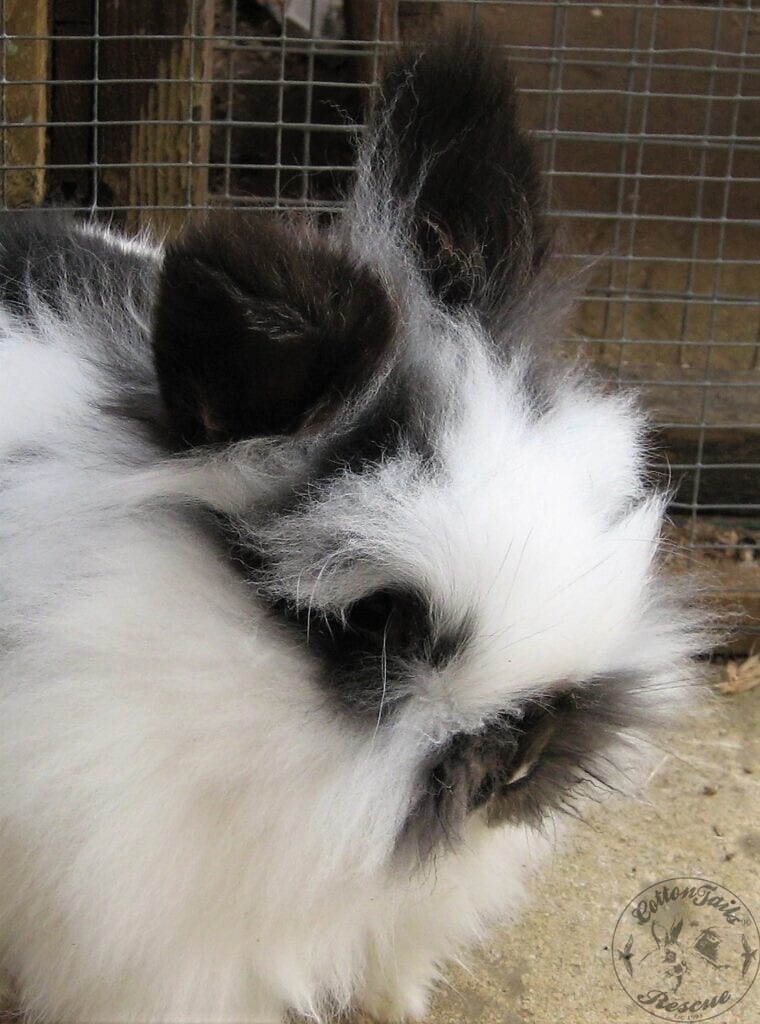
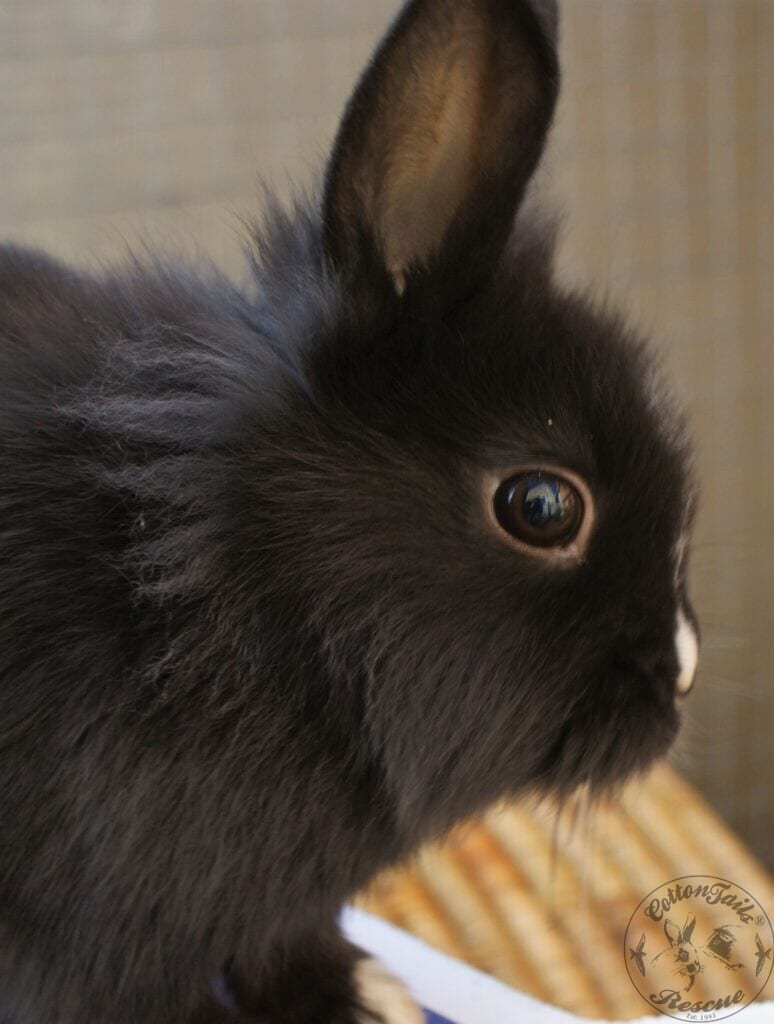
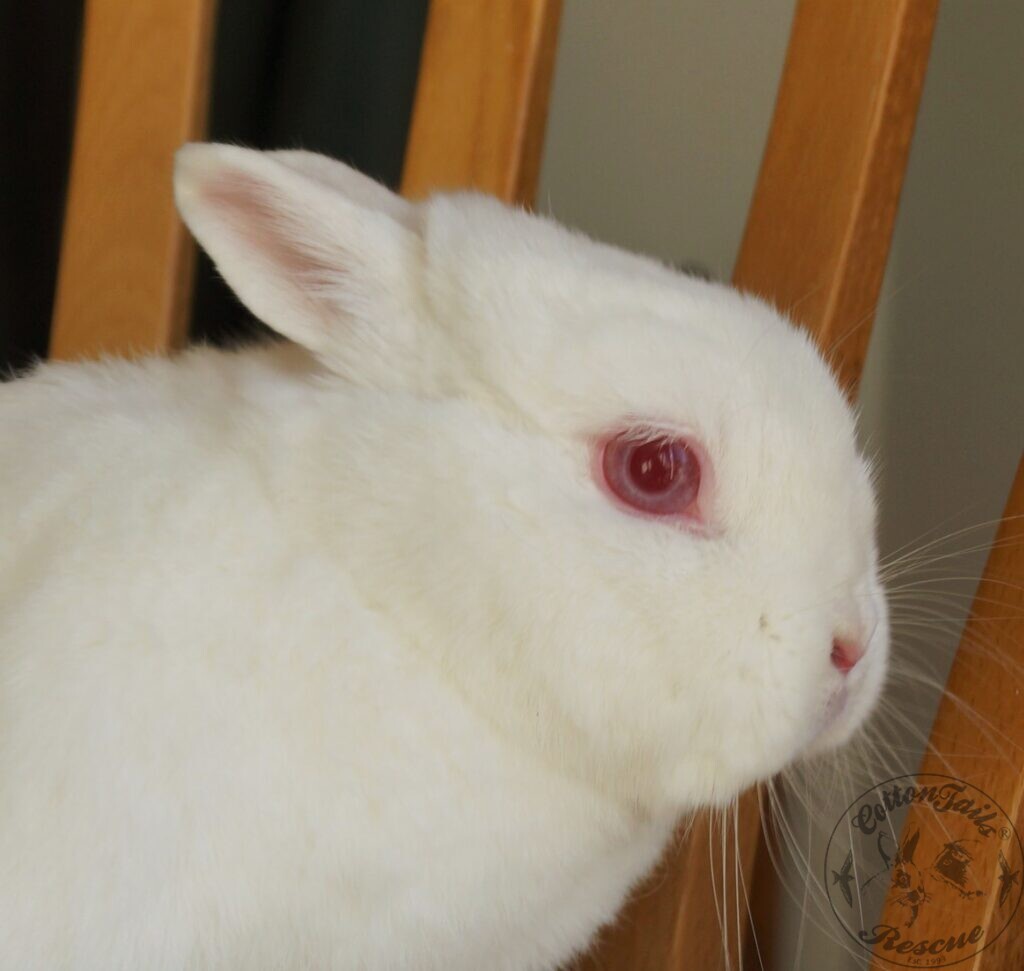
CottonTails® has been running since 1993, and meticulous records have been kept during this time. Thanks to this record keeping, I have compiled this study using data from 2001 to 2019 from 3619 rabbits. 2001 was chosen as the start date as this was the first year we started to see Lionheads arrive in the centre. The graph below shows the percentage of rabbits found to have significant dental disease at the time of arrival compared to the total number having arrived during this period for each of the four breed categories.
The Lionhead category included any rabbit with the characteristic mane, longer fur, and generally upright ears. However, a few of the Lionheads included had partially lopped ears but were still obviously Lionhead in the breed. The Lop category included only rabbits with lopped or partially lopped ears and were short-haired. The Netherland Dwarf category included all very small rabbits with characteristic short upright ears and flat faces. The remaining upright-eared category included rex, dutch, Belgian hares, New Zealand Whites, and crossbred rabbits of no specific breed.
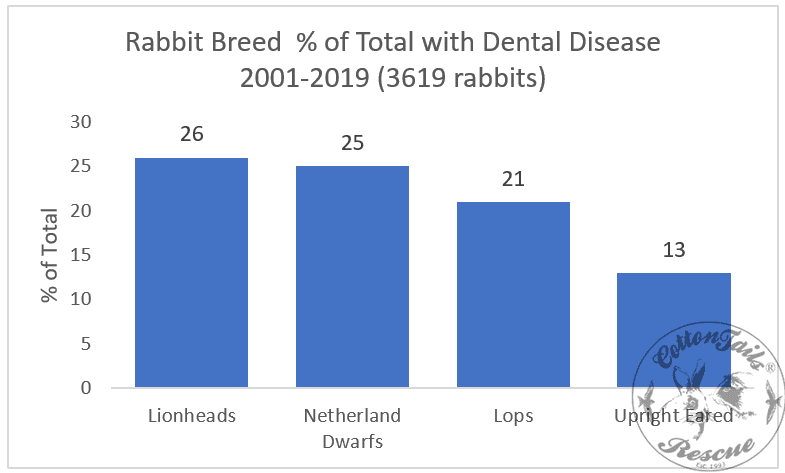
As can be seen from the graph above, of the total number of Lionhead rabbits arriving in the centre between 2001 and 2019 (494 lionheads), 26% were found to have significant dental disease. Of the 188 Netherland dwarf rabbits arriving during the same period, 25% were found to have significant dental disease. 21% of the lop intake (1448) had dental disease, and 13% of the remaining upright-eared breeds were found to have dental disease (out of the intake of 1489).
Many earlier studies have found that lops and dwarfs were significantly more prone to dental disease. Still, most studies were carried out before the Lionhead rabbit became widely popular as a pet. The Lionhead was initially developed in Belgium in the 1990s by crossing Netherland dwarfs with a breed called the Swiss Fox, so it is no surprise that this breed is fraught with dental problems due to the already well-established issues that the Netherland has had combined with the mismatch of the shape of the face of the two breeds concerned. The breed took some time to be accepted in the UK and became popular as a pet, so we did not see any of this breed until 2001.
The rest of the data above is in agreement with the already well-documented studies supporting the hypothesis that lop and dwarf rabbits are more prone to dental disease than other upright-eared rabbits that have the more normal facial shape of the wild rabbit. However, even in that category, the dental disease rate was 13%, so any rabbit may develop this condition during its lifespan, even if not born with an inherited fault. This proves how important it is that owners are well enough informed to correctly feed their pet rabbit, as their future health and lifespan may depend on it.

